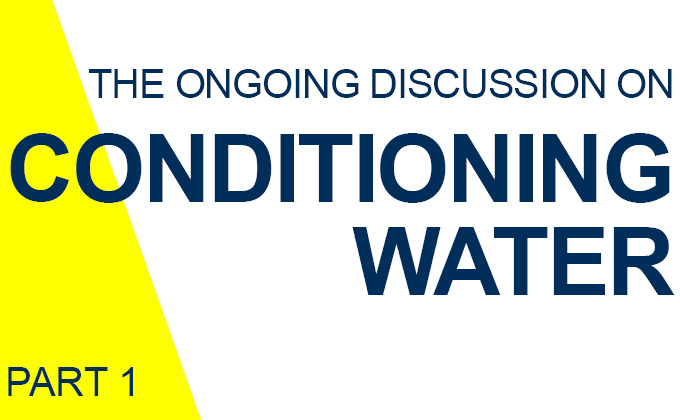This is part 1 of our short series on the ongoing discussion on conditioning water. Please click here to read part 2.
The performance standards for treating ships’ sewage are comparable to that of municipal sewage on land. But ships’ sewage presents a more significant challenge because it can be far more concentrated.
The differences between sewage on ships and on land start with their definitions. Ships’ sewage, regulated by the IMO’s MARPOL Convention, refers to drainage from toilets and urinals. It can be highly concentrated when collected by vacuum systems. The less-concentrated greywater is collected separately from dishwater, showers, laundry, baths and washbasins. Unlike sewage, greywater is not regulated. Untreated greywater can be discharged from ships without restrictions. Hence, the concentration of ships’ sewage can be very high. When collected by the ships’ vacuum systems, it can be 10 times more concentrated than municipal sewage that contains greywater, groundwater infiltration, and rainwater.
However, the availability of sewage treatment plants (STPs) on ships is only proven using a mixture of municipal sewage and primary sludge with a target concentration much lower than that of vacuum sewage. For a ship choosing to treat vacuum sewage alone, a compliant STP operation is compromised because the STP cannot be operated in accordance with its approved conditions. The discrepancy is significant.
A historical lack of compliant discharge sampling and enforcement has masked the detrimental impact of the discrepancy to STP performances. But the situation is changing. With a vast majority of ships found to discharge ‘virtually raw sewage’ from their STPs, the IMO is determined to improve MARPOL Annex IV and its Guidelines to confirm the lifetime performance of the STPs.
To substantiate the availability of STPs their approval conditions shall be adhered to during compliant STP operations. Vacuum sewage must be conditioned by freshwater or greywater to bring the concentration closer to the STP test conditions.
The practice of conditioning the concentrated sewage for treatment has existed on ships for decades. The regulations are now trying to catch up. The Subcommittee on Pollution Prevention and Response has proposed a conditioning water definition since 2020. PPR 10/12 (2023) defines it as freshwater introduced to condition the concentrated sewage onboard to the similar concentrations as the type-test conditions. Whilst the concept is clear, the practicality of verifying conditioning water on board according to such a definition may need to be further reviewed.
It is also important to note that conditioning is not dilution. Conditioning water should not be confused with dilution water. The regulatory discussions on defining and differentiating the two are ongoing. This topic deserves separate updates and reviews.
HAMANN AG has always advised its customers to condition the concentrated sewage using greywater or fresh water. When using greywater, STPs are sized to accommodate the greywater flows according to customer specifications or industrial norms suggested by the classification societies. Treating greywater allows a ship to gain further environmental credentials under many class notations. When using fresh water for conditioning, the STPs are sized to accommodate the combined vacuum sewage and freshwater flow to match the typical sewage flow of a gravity system.
HAMANN STP systems are also complimented by auxiliary systems such as aerated mixing tanks and automated transfer systems for buffering and balancing sewage and greywater mixture for a safe, compact, stable, and effective treatment.

